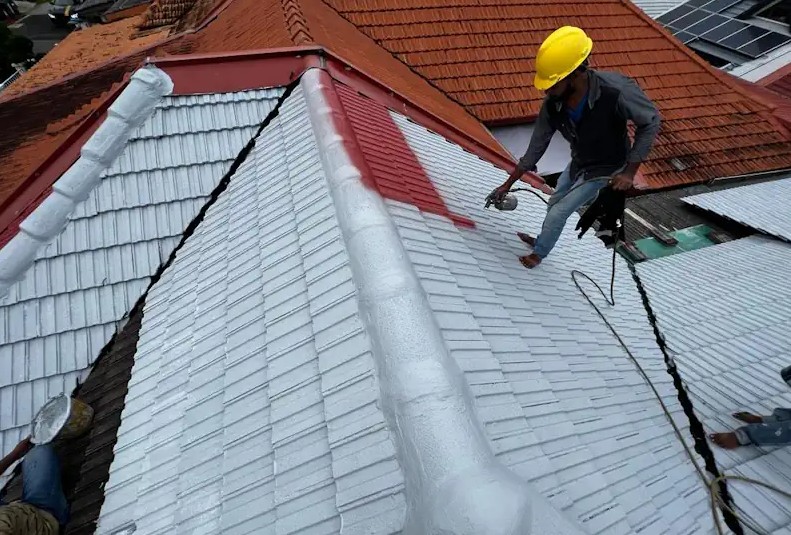
The Hidden Dangers That Only Waterproofing Specialists Can Stop
In the humid corridors of Singapore’s high-rises and the shadowed corners of its shophouses, a silent battle wages daily between moisture and structure, a contest where only a skilled waterproofing specialist possesses the expertise to tip the scales towards preservation rather than decay. The stakes of this invisible war extend far beyond cosmetic concerns, reaching into the very foundations of property value, structural integrity, and human health in ways that most building owners never fully comprehend until catastrophe strikes.
The Unseen Enemy: Understanding Moisture’s Relentless Assault
Singapore’s tropical climate creates a perfect storm of conditions that challenge even the most robust building materials. With humidity levels consistently hovering above 80 per cent and annual rainfall exceeding 2,400 millimetres, moisture finds countless pathways into structures through microscopic cracks, construction joints, and material interfaces that seem impenetrable to the untrained eye.
The consequences of unchecked moisture infiltration unfold like a slow-motion disaster. Concrete begins its inexorable march towards carbonation, steel reinforcement succumbs to corrosion, and organic materials become breeding grounds for moulds and fungi that threaten both structural stability and occupant health. These processes often advance undetected for months or years before manifesting as visible damage, by which time remedial costs can reach astronomical proportions.
Professional waterproofing experts understand that effective moisture management requires more than surface treatments. They recognise the complex interplay between vapour pressure, capillary action, hydrostatic forces, and thermal cycling that drives water through building assemblies in predictable yet often counterintuitive patterns.
The Science Behind Professional Waterproofing Solutions
Modern waterproofing professionals employ sophisticated diagnostic techniques that reveal moisture behaviour patterns invisible to conventional inspection methods. Thermal imaging technology exposes temperature differentials that indicate hidden water infiltration, whilst electrical impedance measurements detect elevated moisture content within concrete and masonry assemblies.
These diagnostic capabilities enable waterproofing experts to develop targeted intervention strategies that address root causes rather than merely treating symptoms. The approach represents a fundamental shift from reactive maintenance to predictive protection that anticipates and prevents moisture-related failures before they occur.
-
Advanced membrane technologies that self-heal minor punctures and maintain integrity over decades
-
Crystalline waterproofing systems that penetrate deep into concrete substrates to create permanent protection
-
Injection grouting techniques that seal active leaks without excavation or major disruption
-
Vapour barrier systems that control moisture transmission whilst allowing controlled breathability
-
Integrated drainage solutions that manage water flow around and through building assemblies
The selection and application of these technologies requires extensive knowledge of material science, environmental engineering, and construction methodology that distinguishes professional waterproofing contractors from general maintenance providers.
Real-World Impact: Case Studies in Protection
Consider the luxury condominium development in Marina Bay, where residents complained of persistent musty odours and unexplained respiratory symptoms. Initial investigations by building management revealed no obvious moisture sources, yet the problems persisted and intensified during monsoon seasons.
A comprehensive assessment by waterproofing professionals uncovered a complex network of moisture infiltration pathways through construction joints and curtain wall interfaces that created ideal conditions for microbial growth within wall cavities. The remedial programme required sophisticated injection techniques and membrane installations that eliminated the moisture sources whilst preserving the building’s architectural aesthetics.
As Singapore’s leading waterproofing specialist explains, “The most challenging cases often involve moisture problems that manifest indirectly through air quality issues or material deterioration rather than obvious water damage. These situations require investigative skills and technical knowledge that go far beyond conventional waterproofing applications.”
The Economic Reality of Professional Protection
The financial implications of moisture-related building damage extend far beyond immediate repair costs. Property values decline significantly when moisture problems become apparent to potential buyers or tenants, whilst insurance claims related to water damage continue rising across Singapore’s property market.
Professional waterproofing represents a preventative investment that generates measurable returns through multiple mechanisms. Energy efficiency improves when building envelopes maintain proper moisture control, reducing HVAC loads and operational costs. Maintenance requirements decrease dramatically when moisture infiltration is prevented rather than managed reactively.
Insurance considerations increasingly favour properties with documented professional waterproofing systems. Premium discounts often reward proactive protection measures, whilst claims processing becomes more straightforward when comprehensive protection can be demonstrated.
Innovation and Future-Proofing
The waterproofing industry continues evolving through technological advancement that addresses emerging challenges in building design and environmental conditions. Smart waterproofing systems now incorporate embedded sensors that provide real-time monitoring of moisture conditions and system performance.
These innovations enable predictive maintenance strategies that optimise protection effectiveness whilst minimising lifecycle costs. Building management systems increasingly integrate waterproofing monitoring data with other facility performance metrics to support comprehensive asset management.
Climate change predictions suggest intensifying rainfall patterns and extreme weather events that will place greater demands on building waterproofing systems. Professional waterproofing contractors design solutions that anticipate these changing conditions whilst providing upgrade pathways for enhanced protection.
Making the Critical Choice
The decision to engage professional waterproofing services represents more than routine maintenance; it constitutes a strategic commitment to property protection that influences long-term value, occupant safety, and operational efficiency. The expertise required to navigate Singapore’s challenging moisture environment and implement effective protection systems demands the specialised knowledge that only experienced waterproofing specialist professionals can provide.
